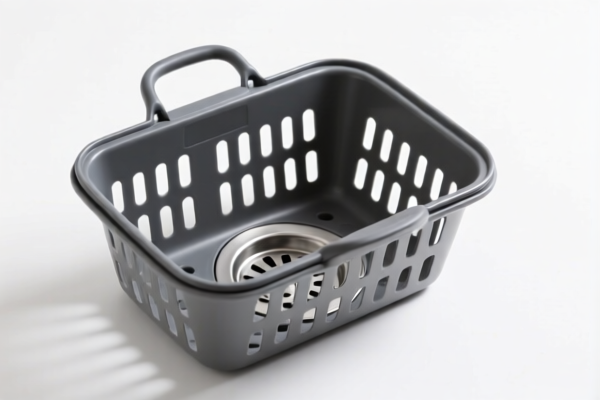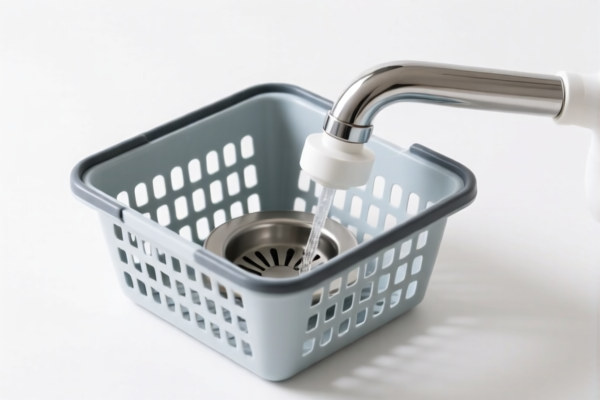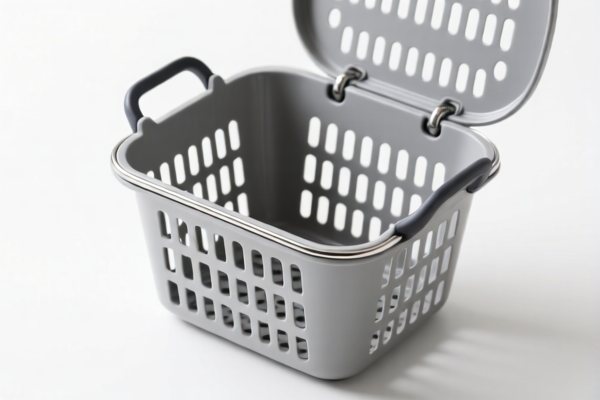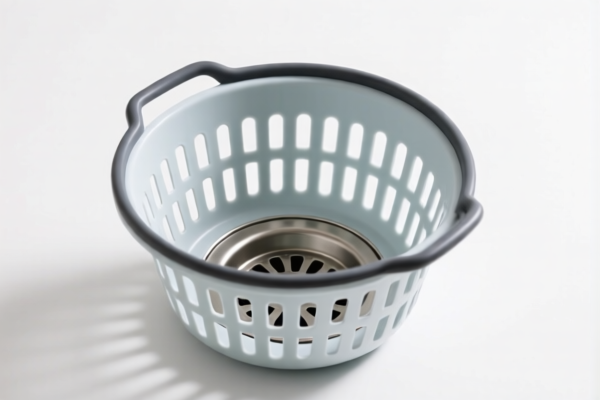| HS Code | Official Doc | Tariff Rate | Origin | Destination | Effective Date |
|---|---|---|---|---|---|
| 3924905650 | Doc | 40.9% | CN | US | 2025-05-12 |
| 7323930060 | Doc | 57.0% | CN | US | 2025-05-12 |
| 7323999030 | Doc | 83.4% | CN | US | 2025-05-12 |
| 4602190500 | Doc | 60.0% | CN | US | 2025-05-12 |
| 4602191700 | Doc | 55.0% | CN | US | 2025-05-12 |
| 8205513030 | Doc | 58.7% | CN | US | 2025-05-12 |




Okay, let's break down the HS codes and tax implications for your "DRAINAGE BASKET" declarations. I'll provide a structured analysis to help you understand the classifications and potential costs.
Understanding HS Codes: A Quick Primer
HS codes (Harmonized System codes) are internationally standardized product codes used to classify traded goods. The first two digits generally indicate the chapter, the next two the subheading, and so on. Here's a general idea of what each section means (though specifics vary):
- Chapter (First 2 digits): Broad category of goods.
- Subheading (Next 2 digits): More specific grouping within the chapter.
- Further Subdivisions: Refine the classification even further.
Analysis of Your HS Codes
Here's a breakdown of each code you provided, with explanations and potential considerations:
1. 3924.90.56.50 – Tableware, kitchenware, other household articles and hygienic or toilet articles, of plastics: Other: Other Other
- Chapter 39: Plastics and articles thereof.
- Subheading 3924: Tableware, kitchenware, other household articles and hygienic or toilet articles, of plastics.
- Further Subdivision: This code seems to cover general plastic household items.
- Tax:
- Basic Duty: 3.4%
- Additional Duty: 7.5%
- Post April 2, 2025: Additional Duty increases to 30%
- Total Tax: 40.9%
- Considerations: Ensure the basket is entirely made of plastic. If any metal components are present, this code is incorrect.
2. 7323.93.00.60 – Table, kitchen or other household articles and parts thereof, of iron or steel; iron or steel wool; pot scourers and scouring or polishing pads, gloves and the like, of iron or steel: Other: Of stainless steel Cooking and kitchen ware: Other: Kitchen ware
- Chapter 73: Articles of iron or steel.
- Subheading 7323: Table, kitchen or other household articles and parts thereof, of iron or steel.
- Further Subdivision: Specifically for stainless steel kitchenware.
- Tax:
- Basic Duty: 2.0%
- Additional Duty: 0.0%
- Post April 2, 2025: Additional Duty increases to 30% (for steel/aluminum products)
- Total Tax: 57.0%
- Considerations: This is appropriate if the basket is primarily stainless steel. Verify the steel grade.
3. 7323.99.90.30 – Table, kitchen or other household articles and parts thereof, of iron or steel; iron or steel wool; pot scourers and scouring or polishing pads, gloves and the like, of iron or steel: Other: Other: Not coated or plated with precious metal: Other: Other Kitchen or tableware suitable for food or drink contact
- Chapter 73: Articles of iron or steel.
- Subheading 7323: Table, kitchen or other household articles and parts thereof, of iron or steel.
- Further Subdivision: Covers iron/steel kitchenware not coated with precious metals.
- Tax:
- Basic Duty: 3.4%
- Additional Duty: 25.0%
- Post April 2, 2025: Additional Duty increases to 30% (for steel/aluminum products)
- Total Tax: 83.4%
- Considerations: If the basket is iron or steel without a precious metal coating, this could be correct. The high tax rate reflects the additional duty.
4. 4602.19.05.00 – Basketwork, wickerwork and other articles, made directly to shape from plaiting materials or made up from articles of heading 4601; articles of loofah: Of vegetable materials: Other: Fishing baskets or creels
- Chapter 46: Vegetable plaiting materials; basketwork, wickerwork, etc.
- Subheading 4602: Basketwork, wickerwork, etc.
- Further Subdivision: Specifically for fishing baskets made of vegetable materials.
- Tax:
- Basic Duty: 5.0%
- Additional Duty: 25.0%
- Post April 2, 2025: Additional Duty increases to 30%
- Total Tax: 60.0%
- Considerations: This is only appropriate if the basket is made of vegetable materials and is specifically designed for fishing.
5. 4602.19.17.00 – Basketwork, wickerwork and other articles, made directly to shape from plaiting materials or made up from articles of heading 4601; articles of loofah: Of vegetable materials: Other: Other baskets and bags, whether or not lined: Other: Wickerwork
- Chapter 46: Vegetable plaiting materials; basketwork, wickerwork, etc.
- Subheading 4602: Basketwork, wickerwork, etc.
- Further Subdivision: General wickerwork baskets made of vegetable materials.
- Tax:
- Basic Duty: 0.0%
- Additional Duty: 25.0%
- Post April 2, 2025: Additional Duty increases to 30%
- Total Tax: 55.0%
- Considerations: If the basket is made of vegetable materials and is a general-purpose basket (not for fishing), this is a likely classification.
6. 8205.51.30.30 – Handtools (including glass cutters) not elsewhere specified or included; blow torches and similar self-contained torches; vises, clamps and the like, other than accessories for and parts of machine tools or water-jet cutting machines; anvils; portable forges; hand- or pedal-operated grinding wheels with frameworks; base metal parts thereof: Other handtools (including glass cutters) and parts thereof: Household tools, and parts thereof: Of iron or steel: Kitchen and table implements
- Chapter 82: Tools, implements, cutlery, etc.
- Subheading 8205: Handtools.
- Further Subdivision: Specifically for iron/steel kitchen and table implements.
- Tax:
- Basic Duty: 3.7%
- Additional Duty: 25.0%
- Post April 2, 2025: Additional Duty increases to 30%
- Total Tax: 58.7%
- Considerations: If the basket is designed as a tool (e.g., for straining, carrying, etc.), this code might be applicable. This is less likely unless it has a specific tool function.
Recommendations & Next Steps:
- Material Verification: Crucially, confirm the primary material of the basket. Is it plastic, stainless steel, other steel, or vegetable materials?
- Functionality: What is the intended use of the basket? Is it for general household use, fishing, or as a tool?
- Post-April 2, 2025 Duty: Be aware of the significant duty increases coming into effect.
- Supplier Documentation: Request a detailed commercial invoice from your supplier specifying the material composition and intended use.
- Consider a Binding Ruling: For complex cases, consider obtaining a binding ruling from customs authorities to ensure accurate classification.
- Check for Trade Agreements: See if any trade agreements exist between your country and the origin country that could reduce duties.
Disclaimer: I am an AI and cannot provide definitive customs advice. This information is for general guidance only. Always consult with a qualified customs broker or authority for specific import regulations.
Customer Reviews
Really appreciated the detailed breakdown of each HS code! Specifically, the info on 8205.51.30.30 helped me determine if my product fits the description for household tools. It’s way more than just the code itself.
The site has a lot of information, which is good, but it can be a little overwhelming. I found HS Code 4602.19.05.00 but the 'considerations' section felt a bit long, and I'm still not entirely sure if it's the right code for my baskets.
I was able to easily find the HS Code 7323.93.00.60 for my stainless steel kitchenware. The breakdown of the tax details, especially the note about the duty increase in April 2025, was really useful.
This site is great for looking up HS codes! I quickly found 3924.90.56.50 for plastic baskets and the tariff rate was clearly shown as 40.9%. Super helpful for planning import costs.